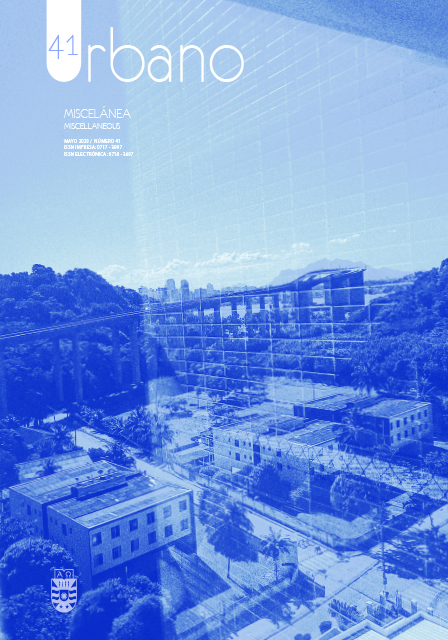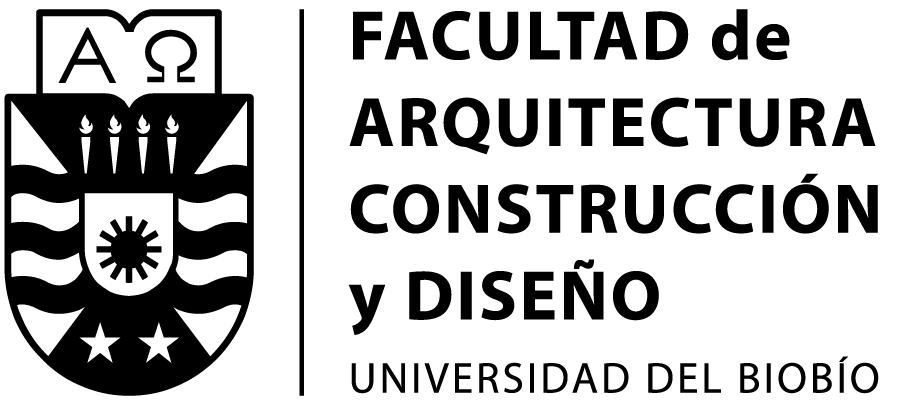Efectos urbanos de la construcción del parque lineal y ciclovía Pocuro, en Santiago / Urban effects of the construction of the Pocuro linear park and cycle path, in Santiago
DOI:
https://doi.org/10.22320/07183607.2020.23.41.09Palabras clave:
desarrollo inmobiliario, Pocuro, captación de plusvalías, movilidad sustentableResumen
Se presenta una evaluación de los efectos en la actividad inmobiliaria en la vitalidad urbana y en los precios del suelo de la transformación del perfil de la calle Pocuro (oriente de Santiago), donde se construyó, en 1997, un parque lineal de casi 1.5 kilómetros, con una ciclovía y un área de caminata. Para ello se expone un catastro de las construcciones levantadas sobre la calle desde 1960 a la fecha, un conteo de personas que han ocupado la calle y entrevistas a locatarios de la misma. Los resultados muestran un alza de 223% en los metros cuadrados construidos en últimos veinte años respecto del período anterior, además de un uso intenso y diverso de la calle. Tanto la actividad inmobiliaria como el intenso uso de la calle resulta valorado positivamente por los locatarios. Finalmente, se detecta que el pago de permisos de edificación ha logrado cubrir el 98.5% de lo invertido originalmente por el municipio, lo que revela que este tipo de inversiones puede ser altamente rentable para las municipalidades.
Descargas
Citas
Banco Inter-Americano para el Desarrollo (BID) (2015). Ciclo-inclusión en América Latina y el Caribe. Recuperado de https://publications.iadb.org/publications/spanish/document/Ciclo-inclusi%C3%B3n-en-Am%C3%A9rica-Latina-y-el-Caribe-Gu%C3%ADa-para-impulsar-el-uso-de-la-bicicleta.pdf
Celis-Morales, C., Lyall, D., Welsh P., Anderson J., Steell L., Guo Y., … Sattar N. (2017). Association between active commuting and incident cardiovascular disease, cancer, and mortality: prospective cohort study. BMJ, 357, j1456.
Cervero R., Guerra E. y Al S. (2017). Beyond mobility. Planning cities for people and places. Washington: Island Press.
Deeniham, G. y Caufield, B. (2014). Estimating the health economic benefits of cycling. Journal of Transport and Health, 1(2), 141-149.
El Rancagüino (2019). Rancagua es oficialmente la comuna con más kilómetros de ciclovías en Chile. El Rancagüino. Recuperado de https://www.elrancaguino.cl/2019/02/08/rancagua-es-oficialmente-la-comuna-con-maskilometros-deciclovias-en-chile/
Fernández-Ramírez, C. y Roch-Peña F. (2012). La quiebra de la ciudad global y sus efectos en la morfología urbana. Madrid, bajo la lógica inmobiliaria de la acumulación-desposesión. Urban, (3), 45-63.
Frank, L. D. y Engelke, P. O. (2001). The built environment and human activity patterns: exploring the impacts of urban form on public health. Journal of Planning Literature, 16(2), 202–218.
Frumkin, H., Frank, L., Jackson, R.J. (2004). Urban Sprawl and Public Health. Washington, DC: Island Press.
Greene, M. y Mora R. (2005). Las autopistas urbanas concesionadas: una nueva forma de segregación. ARQ, 60, 56-58.
Harvey, D. (1989). From managerialism to entrepreneurialism: the transformation in urban governance in late capitalism. Geografiska Annaler. Series B, Human Geography, 71(1), 3-17.
Herrmann, M. y Van Klaveren, A. (2015). Disminución de la participación de la población en organizaciones sociales durante los últimos trece años en Chile e implicaciones para la construcción de una política de planificación urbana más participativa. Revista EURE - Revista De Estudios Urbano Regionales, 42(125), 175-203.
Hillier, B. (1996). Space is the machine. Cambridge: Cambridge University Press.
Hui, N. Saxe, Sh., Roorda M., Hess P. y Miller E. (2017). Measuring the completeness of complete streets. Transport Reviews, 38(1), 73-95.
Hull A. y O´Holleran C. (2014). Bicycle infrastructure: can good design encourage cycling? Urban, Planning and Transport Research, 2(1), 369-406.
Jacobs, J. (1961). The life and death of great American cities. New York: Random House.
Jiang, B. y Ma, D. (2018). How complex is a fractal? Head/tail breaks and fractional hierarchy. Journal of Geovisualization and Spatial Analysis, 2(1), 6.
Kauffmann V. Bergman M. y Joye D. (2004). Motility: mobility as capital. International Journal of Urban and regional research, 28(4), 745-756.
Krizek, K. J. y Johnson, P. J. (2006). Proximity to trails and retail: Effects on urban cycling and walking. Journal of American Planning Association, 72(1), 33–42.
Li, Z., Wang, W., Liu, P. y Ragland, D. (2012). Physical environments influencing bicyclists’ perception of comfort on separated and on street bicycle facilities. Transport Research Part D, 17(3), 256–261.
López-Morales, E., Gasic-Kleitt, I. y Meza-Corvalán, D. (2012). Urbanismo proempresarial en Chile: políticas y planificación de la producción residencial en altura en el pericentro del Gran Santiago. Revista INVI, 27(76), 75-114.
Marshall, S. (2004). Streets and patterns. London: Spon Press.
Mc Cann, B. (2013). Completing Our Streets. Washington: Island Press.
Ministerio de Salud (2017). Encuesta Nacional de Salud. Recuperado de https://www.minsal.cl/wp-content/uploads/2017/11/ENS-2016-17_PRIMEROSRESULTADOS.pdf
Ministerio de Transportes y Telecomunicaciones (MTT). (2013). Recuperado de https://www.mtt.gob.cl/wp-content/uploads/2014/02/plan_maestro_2025_2.pdf
Ministerio de Transportes y Telecomunicaciones (MTT) (2019). Ley de Convivencia Vial. Recuperado de https://www.mtt.gob.cl/wp-content/uploads/2014/02/plan_maestro_2025_2.pdf
Ministerio de Vivienda y Urbanismo (MINVU) (2014). Política Nacional de Desarrollo Urbano. Recuperado de https://cndu.gob.cl/wp-content/uploads/2014/10/L4-Politica-Nacional-Urbana.pdf
Mora, R., Greene, M., Reyes M. (2018). Uso y percepción del espacio público en dos barrios vulnerables. Revista AUS (24), 53-60.
Morcillo-Álvarez D. (2017). La imagen en el cuerpo urbano: la transformación de Madrid hacia el consumo. Revista Urbano 20(35), 32-43.
Municipalidad de Providencia (1997). Actas de concejo de 30 de junio de 1997. Recuperado de http://firma.providencia.cl/dsign/cgi/sdoc.exe/sdoc/document?id=9M0H7mMOAQo%2Bu1%2Bn6S6rAQ%3D%3D.
Municipalidad de Providencia, Memoria Explicativa PRC (2007). Recuperado de http://transparencia.providencia.cl/tact/Carpeta/Listado/22574
NACTO (2016). Transit street design guide. Washington: Island Press.
Ogilvie, D., Bull, F., Powell, J., Cooper, A., Brand, C., Mutrie, N., … Rutter, H. (2011). An applied ecological framework for evaluating infrastructure to promote walking and cycling: The iConnect study. American Journal of Public Health, 101, 473–481
Paydar, M. Kamani-Fard A. y Etminami-Ghasrodashti, R. (2017). Perceived security of women in relation to their path choice toward sustainable neighborhood in Santiago, Chile. Cities, 60 (Part A), 289-300.
Pettinga, A., Rouwette, A., Braakman, B., Pardo, C., Kuijper, D., de Jong, H., … T Godefrooij (2009). Cycling-inclusive policy development: A handbook.
Utrecht. Roads Task Force (2012). Executive Summary The vision and direction for Londn´s street and roads. Recuperado de http://content.tfl.gov.uk/rtf-report-executivesummary.pdf
Sagaris, L. y Landon, P. (2017). Autopistas, ciudadanía y democratización: la Costanera Norte y el Acceso Sur, Santiago de Chile (1997-2007). EURE, 43(128), 127-151.
Scott, C. (2009). Research into barriers to cycling in NSW. Sydney: AMR Interactive.
Sectra (2012). Encuesta Origen-Destino de Viajes. Recuperado de http://www.sectra.gob.cl/biblioteca/detalle1.asp?mfn=3253
Sheller, M. y Urry, J. (2006). The New Mobilities Paradigm. Environment and planning A, 38(2), 207-226.
Smart Growth America-National Complete Streets Coalition (2015).
The best Complete Streets Policies 2015. Recuperado de https://www.smartgrowthamerica.org/app/legacy/documents/best-cs-policies-of-2015.pdf
Smolka, M. y Amborski, D. (2003). Recuperación de plusvalías para el desarrollo urbano: una comparación inter-americana. Revista EURE, 29(88), 55-77.
Waintrub, N., Rossetti,T., Oliva, I., Galilea, P. y Hurtubia, R. (2018). Caracterización socioespacial de los ciclistas urbanos de Santiago. En F. Encinas, A. Wechsler, W. Bustamante y F. Díaz (Eds.), Intersecciones 2016, II Congreso Interdisciplinario de Investigación en Arquitectura, Diseño, Ciudad y Territorio (pp. 150-167). Santiago: ARQ Ediciones.
Publicado
Cómo citar
Número
Sección
Licencia
El contenido de los artículos y reseñas que se publican en cada número de Urbano, es responsabilidad exclusiva de los autores y no representan necesariamente el pensamiento ni comprometen la opinión de la Universidad del Bío-Bío.
Las/os autoras/es conservarán sus derechos de autor, sin embargo, garantizarán a la revista el derecho de primera publicación y difusión de su obra. La publicación del artículo en Urbano estará sujeta a la Licencia de Reconocimiento de Creative Commons CC BY-SA que permite a otros compartir-copiar, transformar o crear nuevo material a partir de esta obra para cualquier propósito, incluso comercialmente, siempre y cuando se reconozcan la autoría y la primera publicación en esta revista, y sus nuevas creaciones estén bajo una licencia con los mismos términos.![]()























